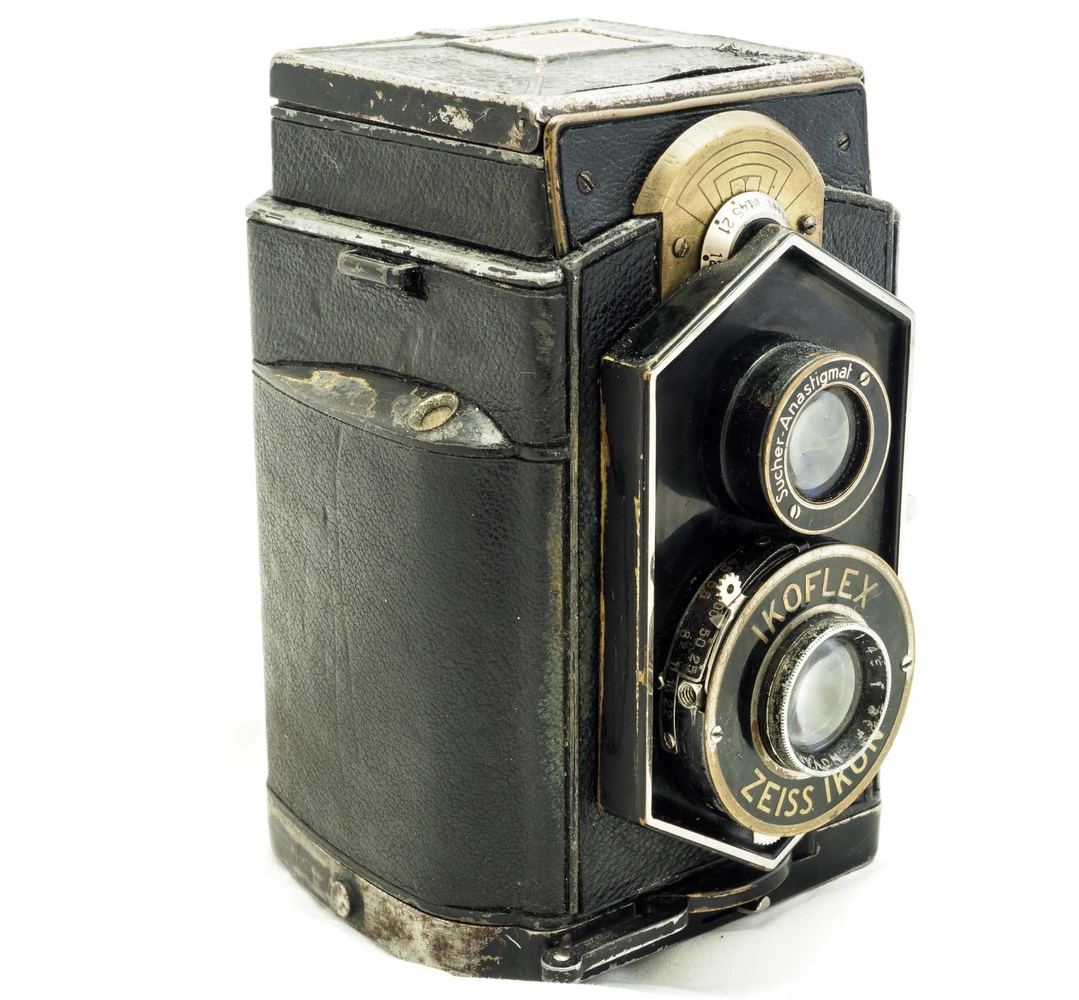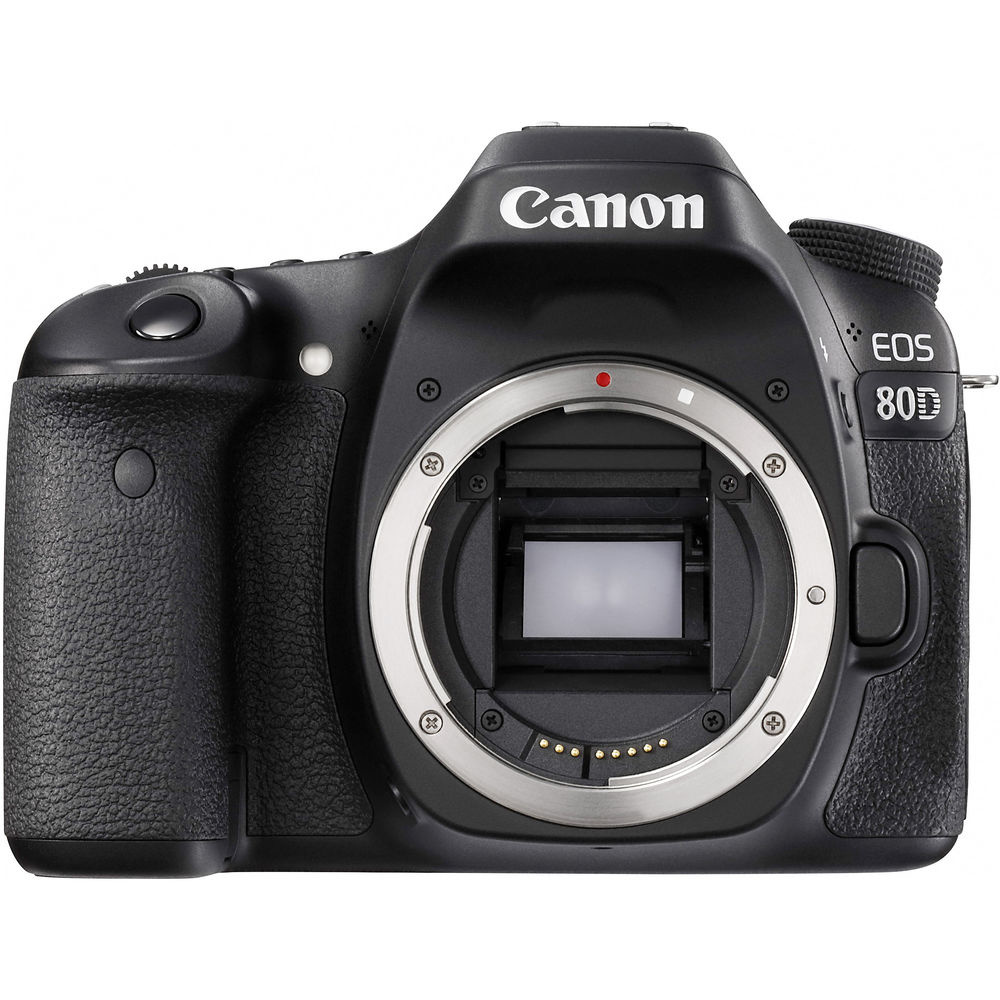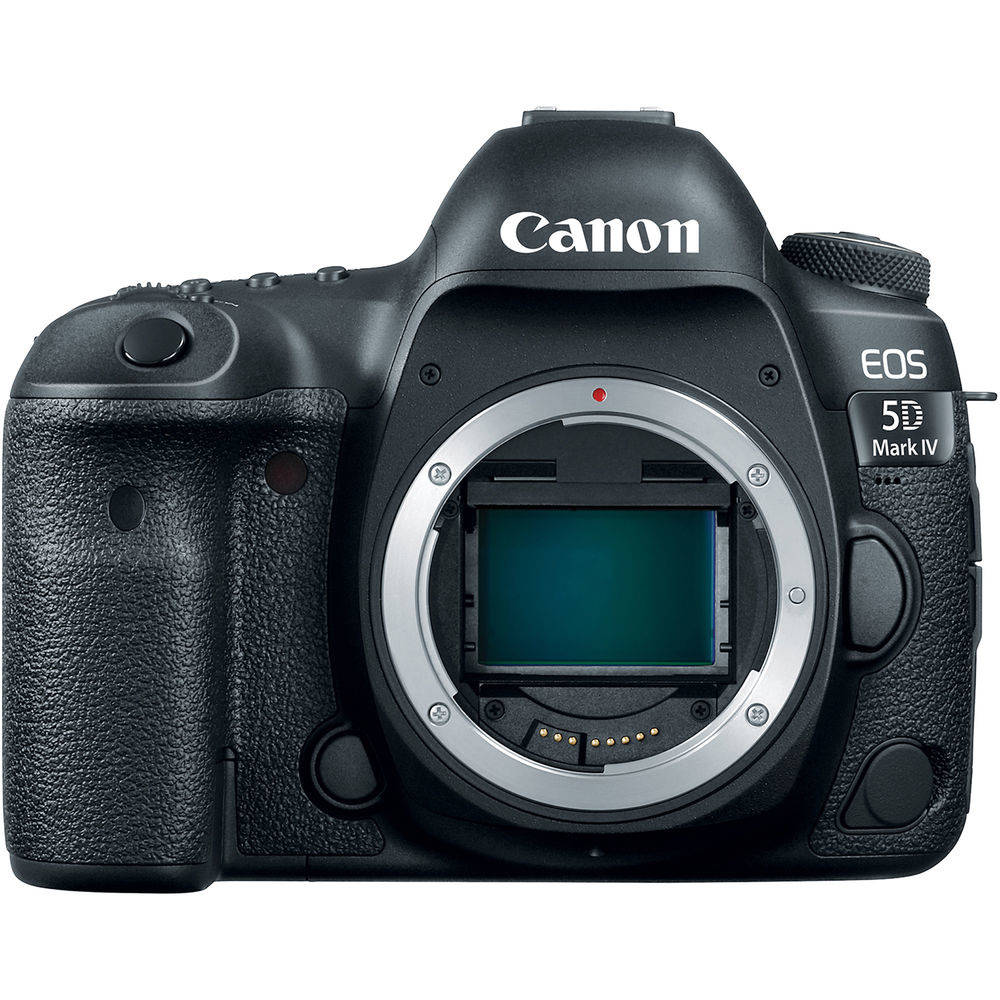Different camera makes and models are better than others for longevity. The main failing point of cameras is the shutter, because it is a moving part. Most manufacturers publish targets for shutter life. By spending a little more, you may get much better value and reduce environmental impact too.
A few months ago, I sold this camera.

Although a bit tatty, this old Zeiss “coffee can” TLR was still going strong and took great pictures. I hope I am in as good repair when I am that old. What are the chances of your current camera still working in twenty-years, let alone eighty?
As digital photography has been commercially available to the masses for over 20-years, will modern cameras hold up to the test of time? As Indiana Jones said, "It's not the years, it's the mileage." It's the amount of use that will cause a camera to fail, not its age.
Are Online Databases Reliable?
It is a challenge to get definitive data about how long cameras last in the real world. Oleg Kikin’s database tried to tackle that issue, but that now appears obsolete with newer models missing. Furthermore, the low number of entries for some models make the results meaningless; there were insufficient cameras entered to be statistically significant. If one camera out of the three recorded of a particular model is shown to fail, that doesn’t reflect the true pattern across every one of that model sold. It could be that the one failure was a freak, or that the two that were still running were the exceptions.
Other online databases exist, but they all have their failings. One group's cameras within ranges as wide as 80,000 actuations, which isn’t helpful. Did all those Canon 5D Mark IVs fail near 81,000 or 162,000? With a life expectancy of 150,000, one hopes it is nearer the latter figure, but there is no telling.
I am deliberately not linking to those databases because their results are too easily faked, but, if you are interested, they are easy enough to find if you search for them,
It’s also worth remembering that an open database like that is prone to abuse; it would be easy for a manufacturer to sabotage them to skew the figures by submitting entries in favor of their own brand and against another. These sorts of dirty tricks do happen online; just look at the trolls who attack articles criticizing major brands brand, or false accounts that praise certain manufacturers and retailers. Politicians are not the only ones who employ fake news to win votes.

Canon EOS 80D The life expectancy of this and many consumer cameras is 100,000. Although better than older models that were rated to only 50,000, this is still a measly amount, especially considering beginners tend to shoot more frames.
The Sin of Built-in Obsolescence
Is the relatively low shutter count on cameras is built-in obsolescence? This is the morally dubious practice of knowingly building goods to fail, so we must buy new ones when they die. If you care about the planet, then it is something you should challenge with your camera's manufacturer. With the ever-growing awareness of Earth's limited resources, we should be calling out the manufacturers to address this issue.
Life Expectancy
Most consumer end cameras have low life expectancies, some as little as 100,000 actuations, and in real life may be achieving less than that. For beginners who typically shoot hundreds of photographs every time they go out, that maybe only a couple of years’ usage; a disgusting waste of our planet's resources.

The Canon 5D Mark IV - Is the shutter life acceptable?
Higher End Cameras Have Longer Lifespans
Going upmarket, cameras last longer. For example, the 5D Mark IV has an advertised shutter life of 150,000 actuations. But that’s still modest when compared with its closest-priced competition from other brands. The Nikon D850 and the Lumix S5 both claim 200,000. The Sony A7iii is rated at 250,000. Canon’s mirrorless R6 does much better than its DSLR counterpart with 300,000 actuations as does the Fujifilm XT4.
Olympus Bucking the Trend.
However, both the $1,499 Olympus E-M1 Mark III, and the $1,799 E-M1X boast a 400,000 shutter life. That’s up there with the $4,499 Canon 1DX Mark II and the $6,496.95 Nikon D6 at a fraction of the cost.
With four times the life expectancy of beginner kit cameras and with better all-round specifications for around three times the price, the Olympus seems an attractive alternative; it's good value. This isn't a sales pitch for Olympus, but if they, one of the smaller brands in the market, can achieve that in more affordable cameras, one must then suspect the motivation for those bigger companies restricting their cameras’ lives in this way. The attitude of the camera will fail, you must buy a new one, must be treated with contempt.

The Olympus OM-D E-M1 Mark III has an enviable shutter life of 400,000, far higher than similarly priced cameras from other brands and equal to far more expensive flagship cameras. With four times the shutter life of beginners cameras, it is an attractive long-term camera for hobbyists.
Greenwashing
We should remember that the expected shutter-life of the camera is a target. Just as companies greenwash by producing environmentally attractive goals they never meet, the advertised target is not necessarily what is achieved in the real world. Shortly before the Covid crisis, a client’s camera died after a measly 53,000 actuations. It should have been good for 100,000. Sadly, it was just out of warranty, but they were able to pay for the repair.
Of course, you can get shutters replaced, but only if the manufacturer is still prepared to fix that model. Recently, another client of mine scrapped her DSLR because its shutter was worn out, and no spares were available.
Wouldn’t it be great if manufacturers made their cameras as long-term investments and not a throwaway consumable? Maybe we should pressure legislators to force manufacturers to guarantee that they will perform repairs on any equipment for twenty or thirty years. How highly would we consider manufacturers if they guaranteed to do that voluntarily?
Looking To the Future
The good news is that manufacturers are starting to increase the lives of their cameras.
As I have said before, they are all capable of taking great photos with the right eye behind the viewfinder, so maybe before investing in a brand, we should look at how long the camera is likely to last. We should also ask camera reviewers to make a big noise about longevity, as it is far more important to our world than the pixel count.
This isn't the end of the story for me. I have also been researching how many cameras from different manufacturers have failed. But that is a topic for my next article.







Ivor Rackham said,
"Is the relatively low shutter count on cameras is built-in obsolescence? This is the morally dubious practice of knowingly building goods to fail, so we must buy new ones when they die."
Ivor,
You speak as though a broken shutter means that the camera must be replaced. This is wrong thinking. A broken shutter means only that the shutter must be replaced.
Sure, sending a camera with a failed shutter back to the manufacturer for a shutter replacement can be quite costly, and in some cases cost more than it is worth. But usually replacing the shutter costs only a small fraction of the value that the camera still holds.
Plus, in my opinion, sending a camera back to the manufacturer for servicing or repair is usually a horrible idea. Why? Because there are a crapton of independent camera repair people who are very qualified to do such repairs, and who charge much less than the manufacturers. In my experience, these independent repair people actually do a better quality of repair work and are much easier to deal with. And they have great access to camera and lens parts. Any parts that the manufacturer has, they can get, as well.
And, just for the record, over the years I have had 5 cameras fail, and only once was it a shutter that had failed. So speaking as if the shutter is the only - or even the main - reason why cameras "die" is not really accurate. Circuit boards are just as likely to cause "death" to a camera as failed shutters are. Internal damage due to exposure to rain and sand is also more likely to happen than a shutter failure, as well.
In writing articles such as this, it is important to not just talk like there is only one main cause for something. You should embrace a much broader view that captures the entire issue, not just one relatively small part of it.
I still own a Canon EOS 450D. The shutter died around 30.000 actuations. I send it to Canon and I got it back from an independent repair shop (CPS Authorised Service Partner). It's a nice camera with over 130.000 and I still use it from time to time.
Nice to hear it's working. They are a smashing camera. Did the actuation counter get reset to zero when the shutter was changed?
Hi Tom, You are right. Replacing the shutter can be done if the repairer still stocks the parts for it. I would, of course, encourage people to get repairs whenever possible, but I suspect a lot of people don't. Sadly, it's a throwaway world and don't manufacturers take advantage of that? At the bottom end of the market, owners are unlikely to pay the cost of replacement when it is two thirds the cost of the camera.
Pan daBear - good joke. Very funny. Thanks for the morning laugh.
I wouldn't mind my consumer electronics products failing if it were easy to repair them. And I don't mean companies being forced to repair my product, I mean companies not going out of their way to ACTIVELY inhibit 3rd parties from repairing them. Even trying to pass laws to make the repair of products you purchased illegal to repair. Apple is a big offender of this.
There is a big movement right now from consumer groups to pass laws that will allow you to repair your own products (or have a 3rd party, like electronic shops, do it for you). It's called "Right to repair"
I highly recommend you write your congressperson in support of this initiative. It's not just good for the consumer, but good for the planet. Manufacturers are lobbying hard against this, they know what it will mean for their pocketbooks. I just want to be able to repair my computer, phone or camera when it breaks rather than throw it away.
Great points, Chad. I know the EU are starting to tackle this very issue. I'm in the UK and don't have a congressperson but an MP. Alas, they don't have a great reputation for standing up to big businesses for the environment. Let's hope lots of ordinary people challenge legislators and vote with our wallets when it comes to buying equipment. Thanks for joining in the conversation.
Hopefully the shutter issue will be a thing of the past when electronic shutters take over at reasonable prices (not A1 prices of course). My a7r3 shutter is rated at 500,000 actuations and after 3 and a half years works like charm. The biggest offenders with regards to planned obsolescence are computers and phones (yes especially from Apple)
Yes, you are right, and hopefully legislators will start to look at that worldwide; I know it is something the EU are wanting to address. A lot of lower-end cameras have far shorter shutter lives and I have an article in the post for publishing during the next week that looks at this. Thanks for commenting.
Interesting discussion, and something I've wondered about before. Two additional points for future articles though:
1. electronic shutters don't (or shouldn't) be part of that shutter count. I've got an Olympus E-M1 II with probably 80,000 shutter actuations, and probably double that in electronic shutter images. That's a lot of extra life in that camera.
2. modern cameras fire at a smoking fast rate. With older cameras I might shoot 150 wildlife images in an afternoon. Now with Pro-Capture and other features that number might be 2000 images.
That's very true, Doug. I use electronic shutter and that doesn't count towards shutter wear and tear. Pro capture is an excellent facility, but it does fill the memory cards up, especially with the 60 fps of the E-M1 II. Thank you for your comment.
My 6 year old Olympus shutter would jam after 3-4 shots. Switching the camera off then on I could shoot another few shots. Olympus support Japan said that they stopped making that model 11 years ago and the technicians in Sydney (Australia) said they couldn't fix it. I was disappointed as I have several lenses and have had to buy a new camera - I'm almost forced to buy another Olympus. I hope it lasts a bit longer!
Shutters do wear out, and sadly manufacturers don't make spare parts forever; it's not economically viable. I had to scrap a car because the parts were not available anymore. The newer OM System cameras have a much longer shutter life, in the region of 400,000, and the Olympus cameras had better shutter lives than most manufacturers. Some consumer models from other brands were sitting at 80,000.
A lot of people use the silent shutter mode to protect the mechanical shutter operation. You might be able to get more life out of your camera by switching to that.
Here in the US, we have lots of junkyards where you can strip parts off of old cars. Can pretty much get any part you need for cheap. Plus it keeps old worn out cars on the road longer, which you would like because of your environmental concerns. My cars all get over 300,000 miles - half a million kilometers - at a bare minimum before I am through with them.
I tried all the junk yards here; we have them too. Most of them now only strip parts of newer cars. Also, it was a brake disk, and I am always cautious about reusing critical parts like that in case they have been in an accident. Still, I paid the equivalent of less than $1000 for the car and it lasted me over six years, so I cannot complain.
Here we have junk yards with hundreds or even thousands of old cars sitting out in fields and you can go pull the part off yourself, or they will go out and pull it off the car for you if you want. A brake disc should have been extremely easy to source ... but I understand that if the car was old and "used up" you probably were ready to move on anyway.
That's a shame your camera is so problematic for something as simple as a shutter. I've had shutters replaced and it's surprisingly cheap.
Can you just keep using your camera even though you only get 3 or 4 shots at a time?